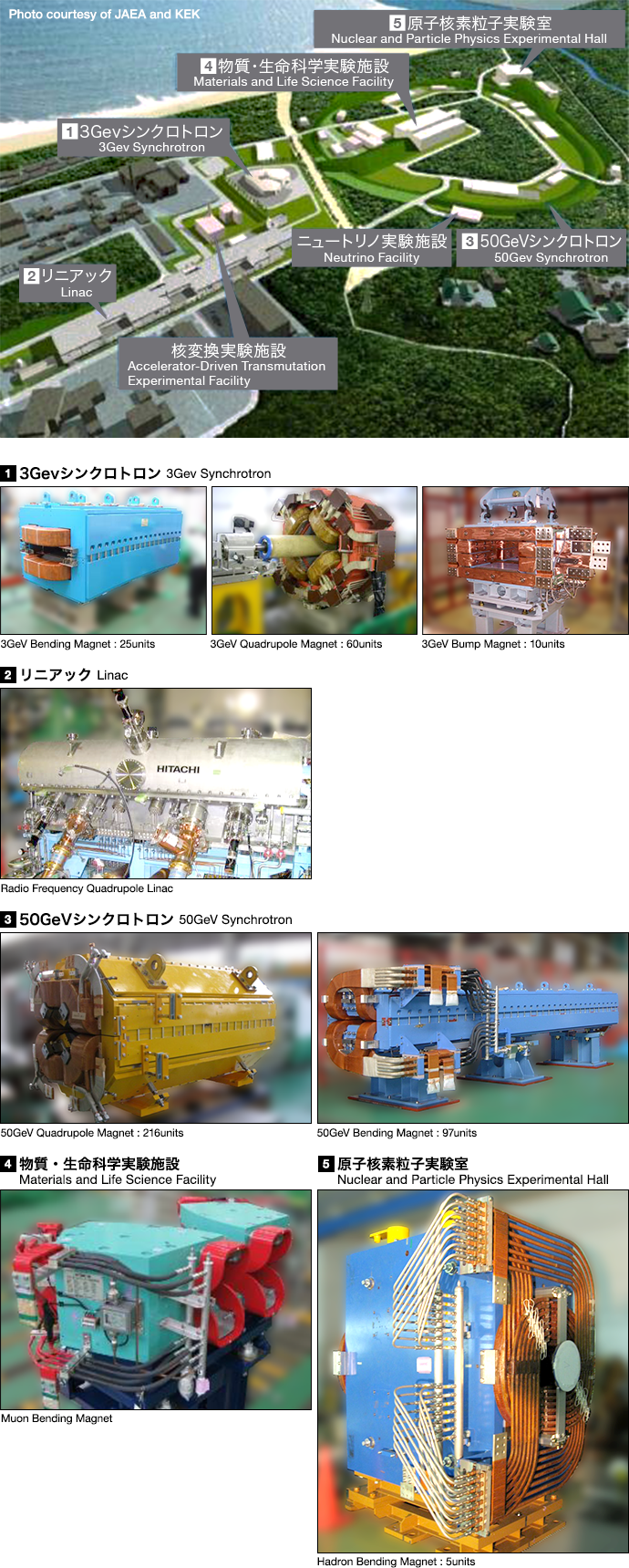Accelerators have developed into powerful research tools in advanced science, and have been widely used in fields such as elementary particles, space, materials, and life sciences, as well as in a wide range of industrial applications. In particular, research accelerators are becoming increasingly diverse. Examples include high-energy accelerators for energy fronts that explore the origins of elementary particles, the universe, and matter itself; high-intensity beam accelerators that generate and use a large number of secondary particles; and accelerators for research promoting the use of radiation. Since the 1970s, we have actively participated in research institute planning, and continued to work on the construction of major research accelerators in Japan.
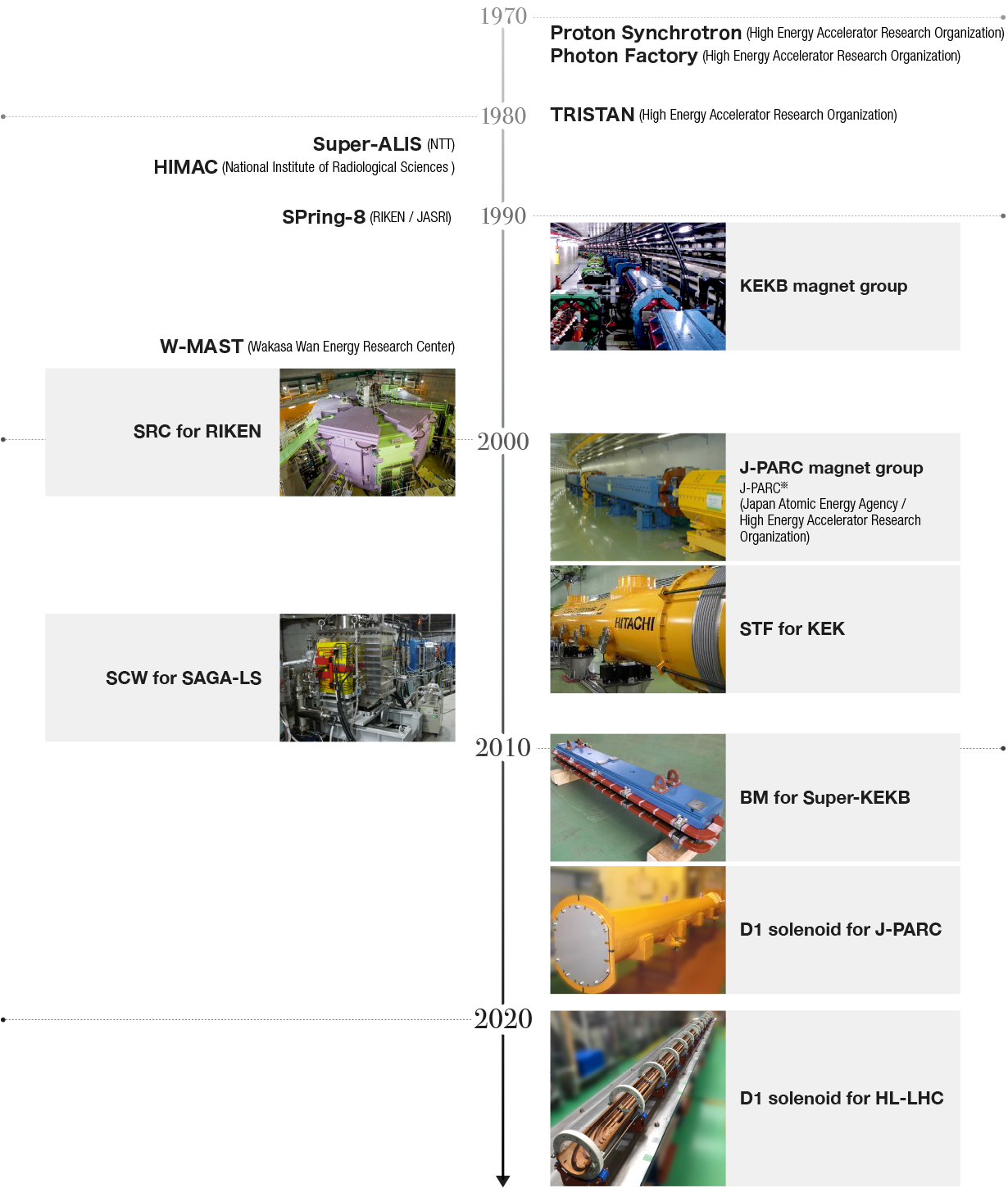
At the European Organization for Nuclear Research's (CERN) Large Hadron Collider (LHC), the construction of a High-Luminosity Large Hadron Collider (HL-LHC) is currently underway, with the aim of improving the performance of the LHC to further explore new physics. As part of the international cooperation with CERN, Hitachi has received an order for the superconducting magnet (D1), and we are working on its manufacture.
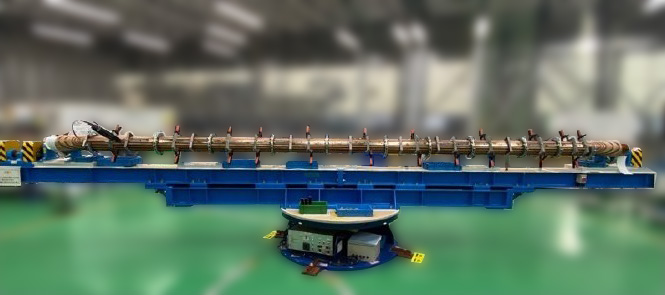
Winding of superconducting coil
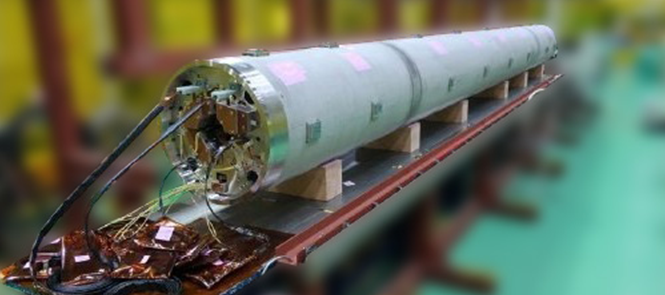
Welding the shell to the superconducting magnet
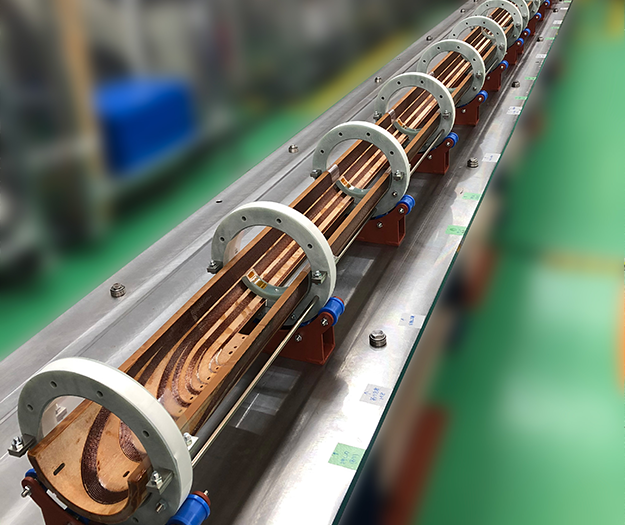
Inner view of D1 magnet
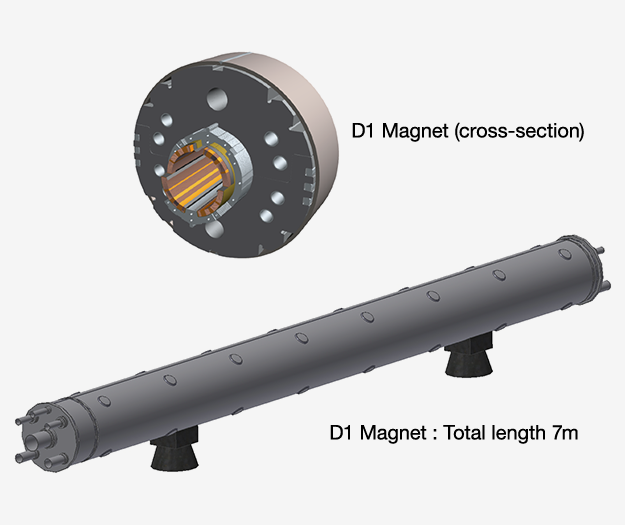
Cross section and the full length of D1 magnet
Provided by High Energy Accelerator Research Organization
The use of a klystron is being considered for the CERN 's Compact Linear Collider (CLIC) project, a candidate future accelerator project. Together with the High Energy Accelerator Research Organization (KEK), Hitachi has developed a superconducting solenoid magnet for the prototype klystron. By using MgB2 (magnesium diboride) as the material for the coil conductor, this magnet has an operating temperature range (25Kelvin) where a single-stage Gifford-McMahon Cryocooler r can be used, and will contribute to energy savings in comparison to magnets made from copper or NbTi (niobium-titanium alloy). This magnet also won the 2020 R&D World R&D Awards 100 and the Cryogenics and Superconductivity Society of Japan's 2021 Science and Technology Impact Award.
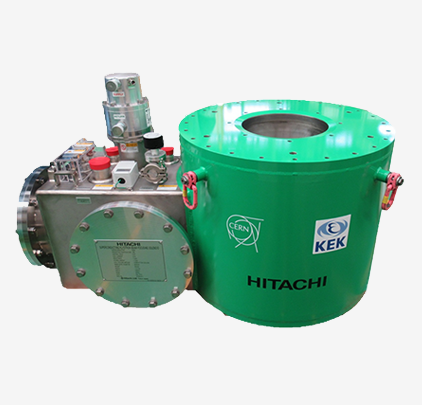
Photo courtesy of KEK and CERN
Magnet
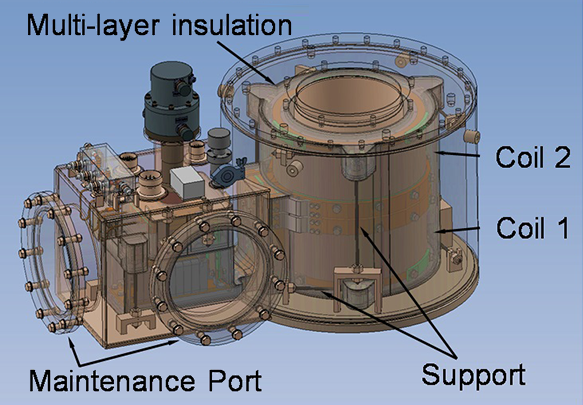
Overview of magnet
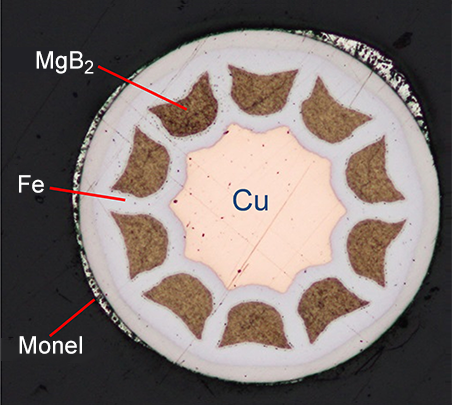
MgB2 conductor cross-section
At SAGA Light Source (SAGA-LS), a synchrotron light facility, Hitachi installed two superconducting wigglers (SCW) with a magnetic field of 4T (Tesla) to meet the need for higher energy synchrotron light. We collaborated with SAGA-LS in designing, manufacturing, and installing the SCWs on site, and carry out regular maintenance contributing to their stable operation.
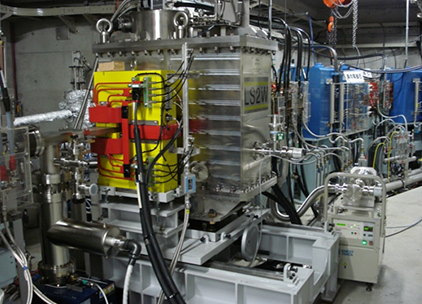
Superconducting Wiggler at SAGA-LS
Photo courtesy of SAGA-LS
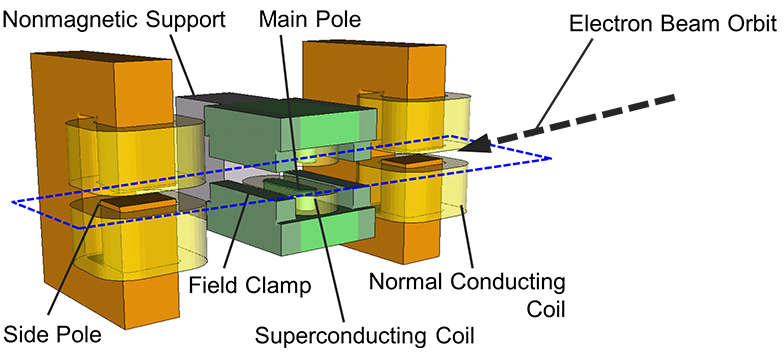
RIKEN's RI Beam Factory (RIBF), a heavy ion accelerator facility, developed the world's first superconducting ring cyclotron (SRC), which accelerates heavy ions up to uranium ions as the facility's final stage accelerator. Hitachi was in charge of manufacturing all six sector electromagnets—the most critical component in the SRC—based on manufacturing technology for large superconducting magnets that we have cultivated over many years.
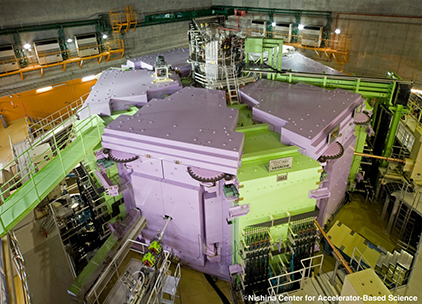
SRC(Superconducting Ring Cyclotron)
Photo courtesy of RIKEN
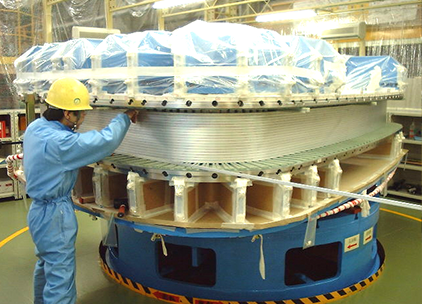
Superconducting main coil
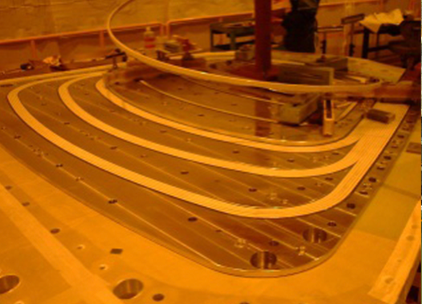
Superconducting trim coil
A muon beamline (D-line) constructed at the Japan Proton Accelerator Research Complex (J-PARC)— Muon science facility of the High Energy Accelerator Research Organization (KEK)—had been in operation until superconducting solenoid magnets for muon transport installed in the D-line were damaged by the 2011 Tohoku earthquake, making it necessary to manufacture replacement superconducting solenoid magnets. Hitachi designed, manufactured, and delivered one solenoid magnet (D1) with a total length of 6 m on the upstream side and two solenoids (D2 and D3) with a total length of 1.5 m after branching.
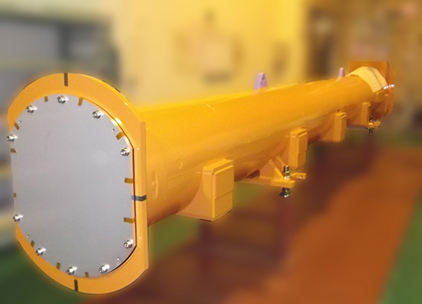
D1 solenoid
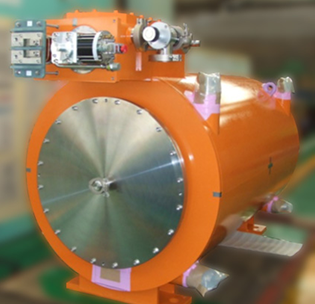
D2 solenoid
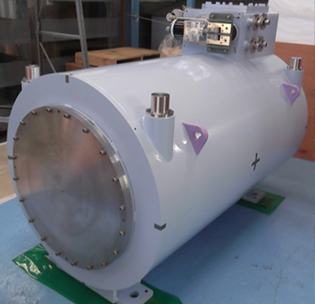
D3 solenoid
(Photo courtesy of KEK)
Hitachi has also delivered a group of large, high-precision electromagnets for experimental equipment at the Japan Proton Accelerator Research Complex (J-PARC), contributing to leading scientific and research activities in the 21st century (in areas including materials science, life science, nuclear and elementary particle research, and nuclear transmutation technology research).

